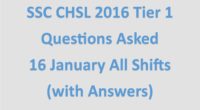Endocrinology – 2 MCQs
1. Insulin and glucagon are antagonistic hormones because they increase and decrease: (a) calcium; (b) potassium; (c) glucose; (d) cell metabolism.
2. Which of the following is produced in the adrenal cortex? (a) male sex hormones; (b) aldosterone; (c) cortisol; (d) all of the preceding; (e) none of the preceding.
3. Gluconeogenesis is best matched with which hormone? (a) cortisol; (b) ADH; (c) glucagon; (d) thyroxine; (e) none of the preceding
4. What hormone would best fit this description? —-“affects metabolism of cells; necessary for the CNS to develop properly; necessary for normal bone growth; stored extracellularly.” : (a) cortisol; (b) growth hormone; (c) T4/T3; (d) thyrocalcitonin
5. Calcium/Phosphate levels in the blood are regulated by: (a) aldosterone; (b) cortisol; (c) ACTH; (d) PTH & calcitonin
6. Where are glucocorticoids produced? (a) adenohypophysis; (b) neurohypophysis; (c) pancreas; (d) testes/ovaries; (e) none of the preceding
7. What hormone is primarily responsible for glucose storage as glycogen; stimulating fat storage, and stimulate protein synthesis? (a) GH; (b) TSH; (c) insulin; (d) cortisol
8. Too much GH in an adult results in: (a) giantism; (b) acromegaly; (c) Simmond’s disease; (d) diabetes insipidus
9. Cyclic AMP is best matched with: (a) steroid hormones; (b) protein hormones; (c) muscle cells; (d) the male hormone, testosterone.
10. Classical Endocrine glands such as the pituitary, thyroid and adrenal gland: (a) have ducts; (b) produce many different products; (c) produce hormones; (d) use the product locally
11. Increasing the uptake of iodine by the thyroid gland and increasing the growth of the thyroid gland are two functions of: (a) TSH-RH; (b) TSH; (c) T3; (d) thyroglobulin
12. The primary effect of T3 and T4 is to: (a) decrease blood glucose; (b) promote the release of calcitonin; (c) promote heat-generating (metabolic) reactions; (d) stimulate the uptake of iodine by the thyroid
13. The primary effect of calcitonin is to: (a) increase blood glucose; (b) decrease blood glucose; (c) increase excretion of calcium ions in urine; (d) increase blood calcium; (e) decrease blood calcium by blocking release from the bone
14. An increase in blood glucose and an anti-inflammatory effect are important effects of: (a) epinephrine; (b) glucagon; (c) cortisol; (d) insulin; (e) ADH
15. The primary target for glucagon is the: (a) liver; (b) hypothalamus; (c) adrenal cortex; (d) pancreas; (e) kidney
16. The Islets of Langerhans are the endocrine portion of the: (a) adrenal cortex; (b) adrenal medulla; (c) anterior pituitary; (d) posterior pituitary; (e) pancreas
17. The only hormone that promotes the anabolism (building up) of glycogen, fats, and proteins is: (a) GH; (b) insulin; (c) epinephrine; (d) aldosterone; (e) cortisol
18. When a hormone that uses a second messenger binds to a target cell, the next thing that happens is that: (a) phosphodiesterase is activated; (b) a protein kinase is formed; (c) a gene is activated in the nucleus; (d) adenyl cyclase is activated by a G protein; (e) voltage-regulated ion channels open in the cell membrane
19. Most hormones that use a second messenger (cyclic AMP) are: (a) proteins; (b) enzymes; (c) steroids; (d) nucleic acids
20. When a steroid hormone binds to its target cell receptor, it: (a) causes the formation of cyclic-AMP; (b) is converted into cholesterol, which acts as a second messenger; (c) causes the formation of releasing hormones; (d) turns specific genes of the nuclear DNA on or off.
21. Blood glucose is raised by all of the following EXCEPT: (a) glucagon; (b) GH; (c) epinephrine; (d) cortisol; (e) insulin
22. The milk ejection reflex is an important effect of: (a) prolactin; (b) estrogen; (c) progesterone; (d) oxytocin; (e) FSH
23. Thyroglobulin is: (a) the major component of colloid inside follicles; (b) another name for thyroid hormone; (c) the major stimulus for release of thyroid hormones; (d) the protein that transports thyroxine in the blood; (e) the protein that transports TSH to the thyroid gland
24. Long-term therapy with steroid drugs, such as cortsone, can cause osteoporosis and muscle wasting because of: (a) increased blood glucose; (b) increased protein breakdown; (c) bacterial breakdown of bone and muscle; (d) increased protein build up; (e) increased excretion of calcium ions in the urine
25. Diabetes insipidus results from: (a) hyposecretion of insulin; (b) hypersecretion of insulin; (c) hyposecretion of aldosterone; (d) hypersecretion of ADH; (e) hyposecretion of ADH
26. An autoimmune disease in which an antibody mimics the action of TSH is: (a) myxedema; (b) cretinism; (c) acromegaly; (d) Cusing’s disease(syndrome); (e) Grave’s Disease
27. A “moon face,” and heavy fat deposition over the scapula, “buffalo hump” suggests that a person has chronically high levels of: (a) insulin; (b) GH; (c) thyroid hormones; (d) cortisol; (e) estrogens.
28. Suckling is an important stimulus for release of: (a) oxytocin; (b) DHEA; (c) estrogen; (d) FSH; (e) LH
29. The function of adenyl cyclase is to: (a) break down a protein hormone when it binds to its receptor; (b) turn on a G-protein; (c) cause the conversion of ATP to cAMP; (d) activate a protein kinase; inactivate cAMP
30. You have consumed a six-pack of beer in the course of an evening. The combination of fluid intake and alcohol act to inhibit the secretion of: (a) ACTH; (b) ADH; (c) insulin; (d) TSH
31. If levels of PTH are high, one would expect to see: (a) increased osteoblast activity; (b) increased excretion of calcium ions in urine; (c) increased excretion of phosphate ions in urine; (d) decreased calcium concentration of the blood; (e) c and d are both correct
32. Exophthalmos of the eyes is a characteristic sign of: (a) myxedema; (b) cretinism; (c) Graves’ Disease; (d) acromegaly; (e) Cushing’s Disease
33. Levels of ACTH are high in Addison’s disease because: (a)*levels of glucocorticoids are low; (b) levels of glucocorticoids are high; (c) excessive water is being lost with sodium ions; (d) there is a tumor of the corticotrophs in the adenohypophysis
34. Destruction of the beta cells of the pancreas results in: (a) Type I diabetes (insulin-dependent); (b) Type II diabetes (insulin-nondependent); (c) diabetes insipidus; (d) hyperglycemia
35. What hormone causes contraction of smooth muscle surrounding milk glands of the mammary gland? (a) oxytocin; (b) ADH; (c) TSH; (d) GH; (e) prolactin
36. What hormone, along with estrogen, stimulates the development of the mammary glands? (a) oxytocin; (b) ADH; (c) TSH; (d) GH; (e) prolactin
37. What endocrine glands are stimulated by FSH and LH? (a) thyroid; (b) testes/ovaries; (c) adrenal medulla; (d) alpha cells of the pancreas
38. Simmond’s Disease is an adult disease of not enough: (a) PTH; (b) GH; (c) ADH; (d) cortisol; (e) insulin
39. Which of the following hormones are manufactured in the hypothalamus? (a) TSH-RF, (b) ACTH-RH; (c) oxytocin; (d) ADH; (e) all of them are
40. A simple goiter results from: (a) lack of TSH ; (b) too much PTH; (c) lack of iodine; (d) lack of iron; (e) autoimmunity
41. The amino acid, tyrosine, has 4 iodines attached to the ring structures. What is the correct name of this hormone? (a) triiodothyronine; (b) tetrahydrogenous; (c) tetraiodothyronine; (d) calcitonin
42. Select the correct disorder for these symptoms: (1) salt craving; (2) high K+; (3) hypotension; (4) hypoglycemis; (5) collapse due to stress——-(a) diabetes, Type I; (b) Cushing’s disease(syndrome); (c) diabetes insipidus; (d)*Addison’s Disease (hypoadrenalism).
43. When a hormone name ends in “tropic,” what does this mean? (a) the hormone stimulates the metabolism of the cell it contacts; (b) it means the hormone affects another “target” endocrine gland; (c) it means the hormone always enters the cell and turns on and off portions of the cell’s DNA; (d) it means it is a posterior pituitary hormone
44. Aldosterone acts primarily on two things (a) kidney & sweat glands; (b) carbohydrates and proteins; (c) uterus & mammary glands; (d) blood and immune system
45. What gland produces calcitonin? (a) parathyroids; (b) thyroid; (c) adrenal cortex; (d) adenohypophysis
1C, 2D, 3A, 4C, 5D, 6E, 7C, 8B, 9B, 10C, 11B, 12C, 13E, 14C, 14A, 16E, 17B, 18D, 19A, 20D, 21E, 22D, 23A, 24B, 25E, 26E, 27D, 28A, 29C, 30B, 31C, 32C, 33A, 34A, 35A, 36E, 37B, 38B, 39E, 40C, 41C, 42D, 43B, 44A, 45B.


